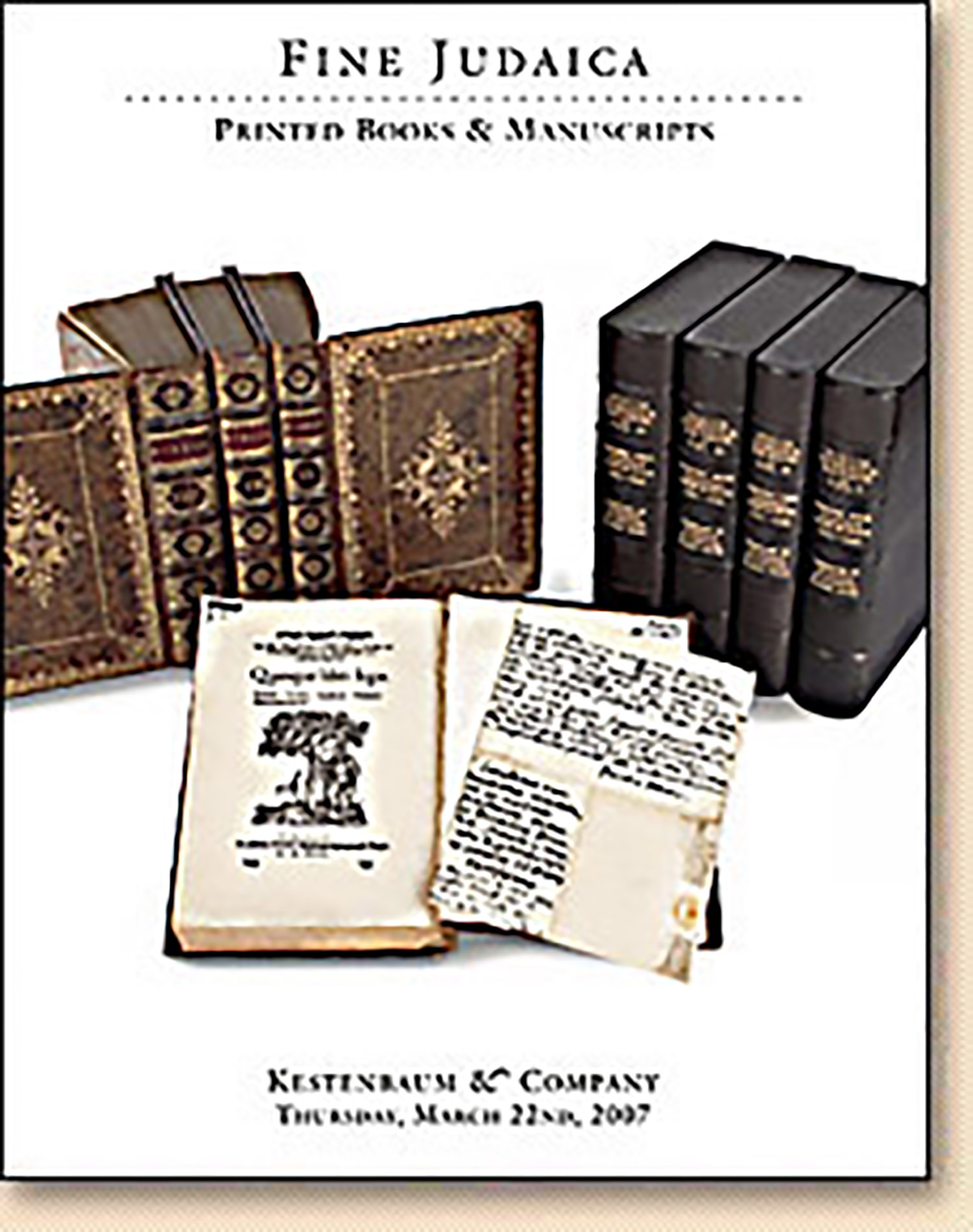Minhagim [Customs of Aschkenazic Jewry in Poland, Bohemia and Moravia]. Translated from Hebrew to Yiddish by Simon Levi Ginzburg. Includes Calendar for Hebrew years 5405-5424 [1645-1664]

AUCTION 36 |
Thursday, March 22nd,
2007 at 1:00
Fine Judaica: Printed Books & Manuscripts
Lot 199
TYRNAU, ISAAC.
Minhagim [Customs of Aschkenazic Jewry in Poland, Bohemia and Moravia]. Translated from Hebrew to Yiddish by Simon Levi Ginzburg. Includes Calendar for Hebrew years 5405-5424 [1645-1664]
Amsterdam: Elijah Aboab for Menasseh ben Israel 1645
Est: $50,000 - $70,000
PRICE REALIZED $110,000
Extremely Rare and Highly Coveted Book of Ceremonies. A Perfect Copy from a Nobleman’s Library.
This Minhagim Book of 1645, with its beautiful woodcuts, is the first illustrated Hebrew book to appear in the Netherlands. Certainly it is the finest production of the Menasseh Press. It is also only the second book printed in the Netherlands with the so-called waybertaytsh lettering, a font developed especially for the printing of Yiddish books. Although the text is similar to the first edition of this Yiddish issue (Mantua, 1590), the illustrations of this Dutch edition are completely redrawn and indeed would eventually become the master prototype for many, many other Hebrew and Yiddish editions printed in Amsterdam throughout the seventeenth and eighteenth centuries.
At first blush, one might wonder why a Sephardic Jew, Menasseh ben Israel, would become involved in the printing of a book of Aschkenazic customs - in the Yiddish language, no less. However, the fact is readily comprehensible if one takes into account Menasseh’s marketing stategies:
“Whether through the contacts with his German Jewish compositors or after running into the censorious restrictions of his own Mahamad in the course of printing Yosef Delmedigo’s writings, Menasseh was motivated to expand his activities and thus attended the Frankfurt book-dealers’ fair in 1634; to seek a Jewish or a Christian market we do not know. He (did indeed) find a Jewish market and began printing Ashkenazi prayer-books…” See D. M. Swetschinski, Reluctant Cosmopolitans: The Portuguese Jews of Seventeenth-Century Amsterdam (2000), p.151. Indeed, the colophon on f.76r. informs us that the compositor (or “zetzer,” typesetter) of our own volume was just such a German Jew, “Reuben bar Elyakum of Mainz on the River Rhine.”
The last copy of this Minhagim to appear at auction was the Prins copy, sold a dozen years ago (Christie's, see their front cover)
One of the Finest Books Printed by the Hebrew Dutch Press.
